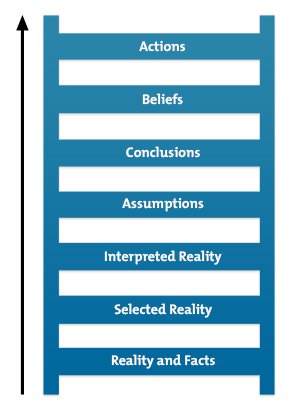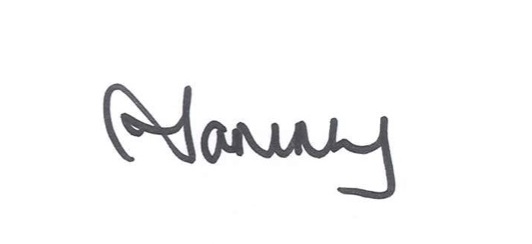Have you ever drawn a conclusion from someone else’s behaviour or actions that is just completely incorrect? Put 2 and 2 together and got 5? That’s fine, except that it usually means that we then act on that incorrect conclusion. And on the cycle goes.
The ladder of inference
First developed by Chris Argyris, the ladder of inference describes how by applying selective filters based on experience, beliefs and values, we can end up with a conclusion that is just not right.
Our beliefs can have a big effect on how we select from reality, and can lead us to ignore the true facts altogether. Soon we are literally jumping to conclusions – by missing facts and skipping steps in the reasoning process.

Image with thanks to Argyris, C., ‘Overcoming Organizational Defenses: Facilitating Organizational Learning.’ 1st Edition, (c) 1990. Printed electronically and reproduced by permission of Pearson Education, Inc., Upper Saddle River, New Jersey. and Sons, Inc.
What the ladder of inference means
At every level of the ladder, our conclusions are getting ever more narrow because of the assumptions/beliefs etc that we’re applying.
The classic example is where you might receive a text or email from someone that reads a little gruffly, and assume that the author is in some way annoyed with you. This might result in sending back a terse response. Which leads the initial author to fire one back in ever increasing circles of annoyance. Or where you receive a piece of data and rather than assess that data, jump to an immediate conclusion about it.
How to use the ladder of inference
At its heart, the ladder of inference suggests that we:
- Be mindful of the steps we take to get from 2+2=5.
- Check which rung of the ladder we are on.
- Test each of the assumptions, beliefs, “reality” up and down the ladder.
- Ask “is this right?”, “why am I thinking this?”, “is there another conclusion I could draw?”, “do I have all the facts?”
Being able to articulate how you get from a to z is useful. This is what initially happened, and this is the “logic” in getting to the end answer.
Alternatively, asking a friend, family member or coach can be handy. Ask them to test you at every step. Why did you think that? What else could you have thought? Is there another explanation? Do you have all the relevant data?
This tool is particularly useful where you find yourself making an emotive decision.
Key takeaways
- If you find yourself “jumping to conclusions” or skipping over actual data to reach a decision, take a breath and a step back.
- Have you put 2+2 to get 5?
- Work backwards – how did you get there? What filters did you apply and are those filters accurate?
- What other conclusions could you reach?
Want more?
As always, if you’d like to get in touch – you can click here.
If you’d like to read any of the 250+ blog posts on this site, you can click here.
If you’d like to buy one of my books, you can click here.
And if you’d like to sign up to permission to dream programme, you can click here.

With thanks to MindTools

